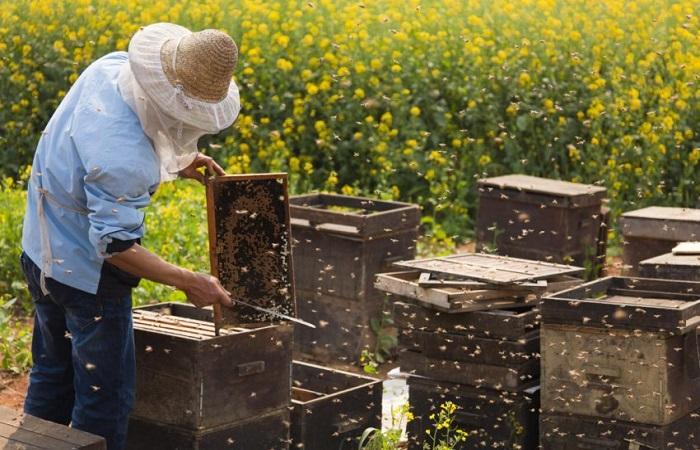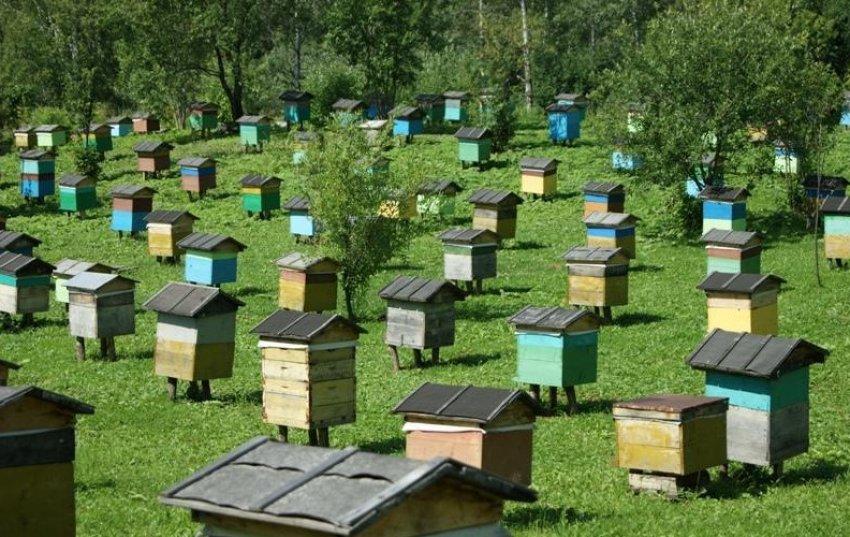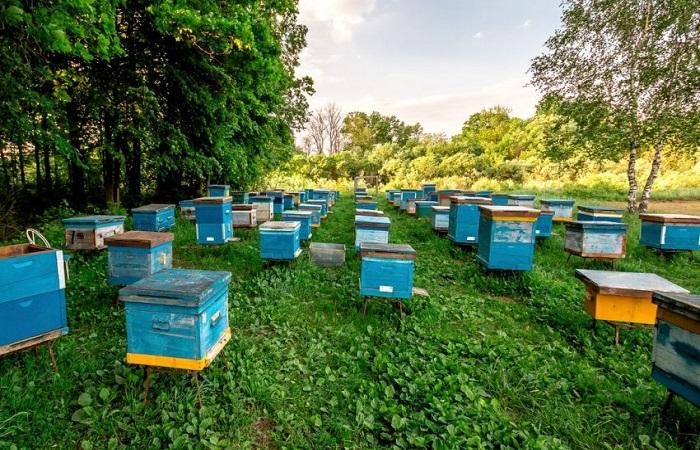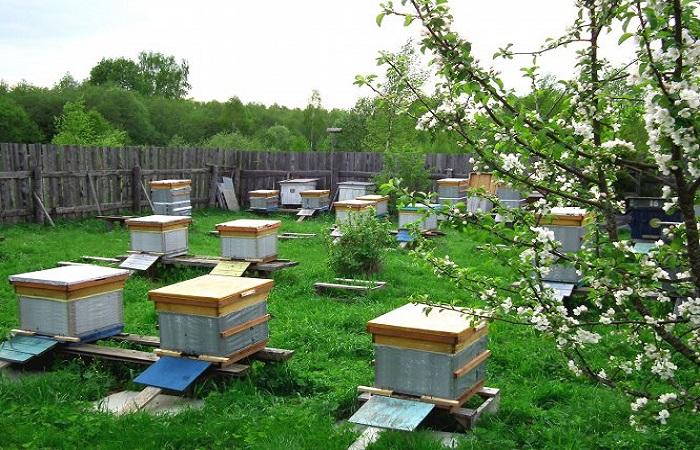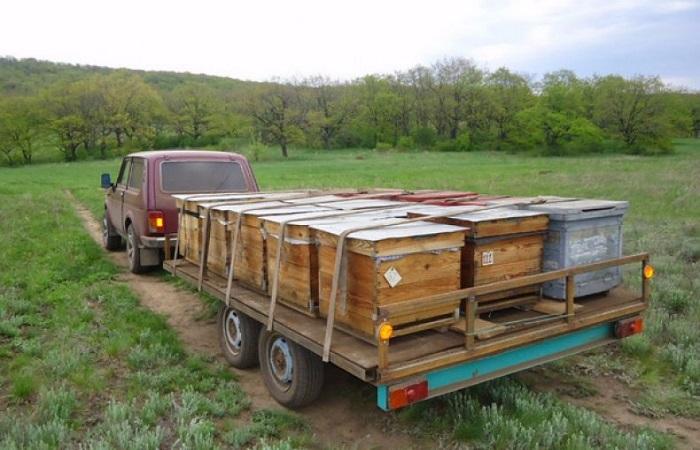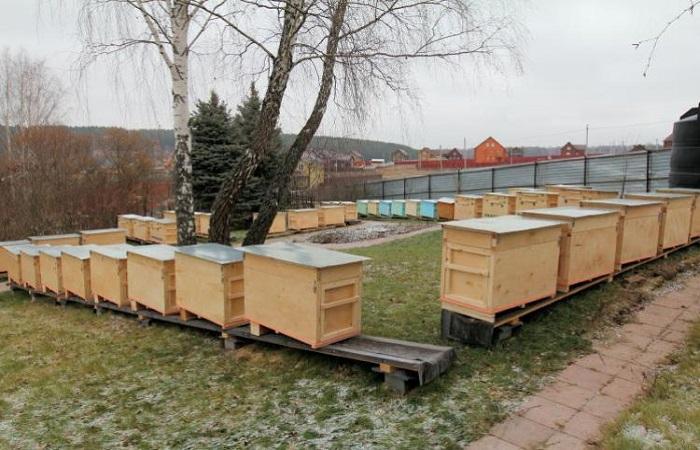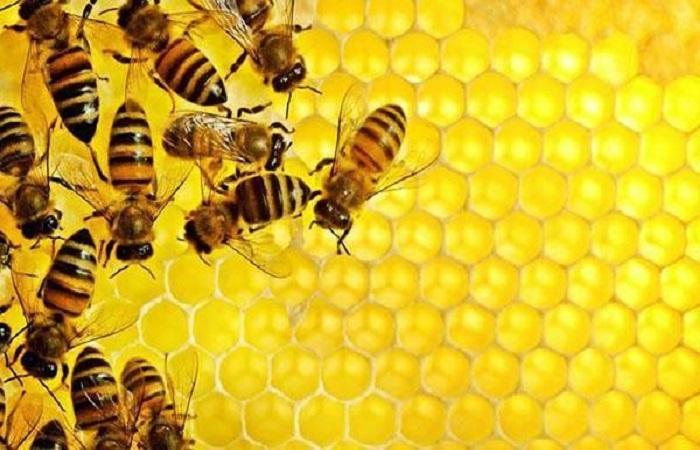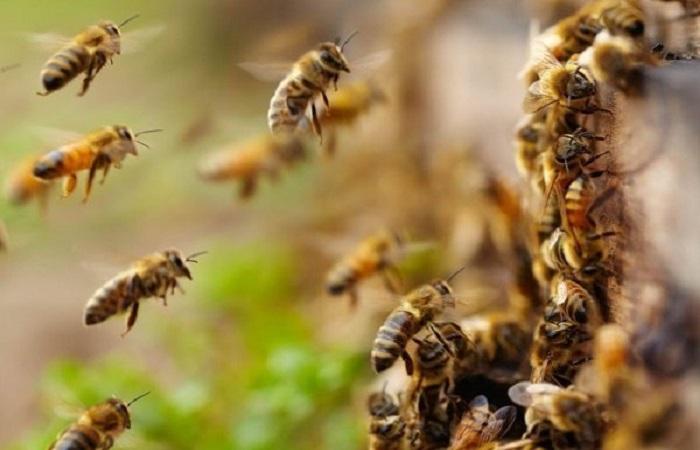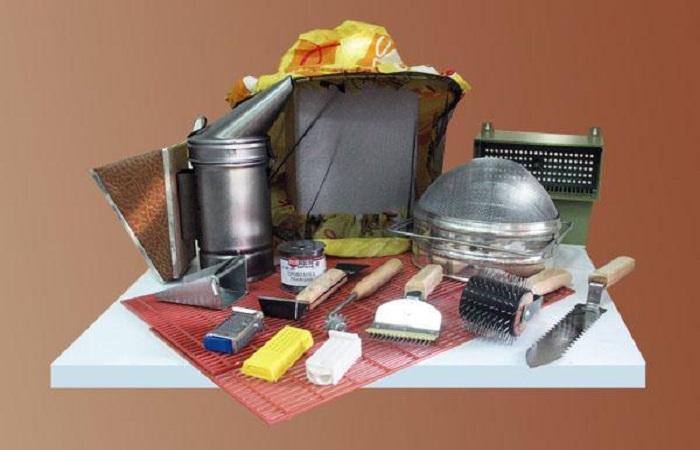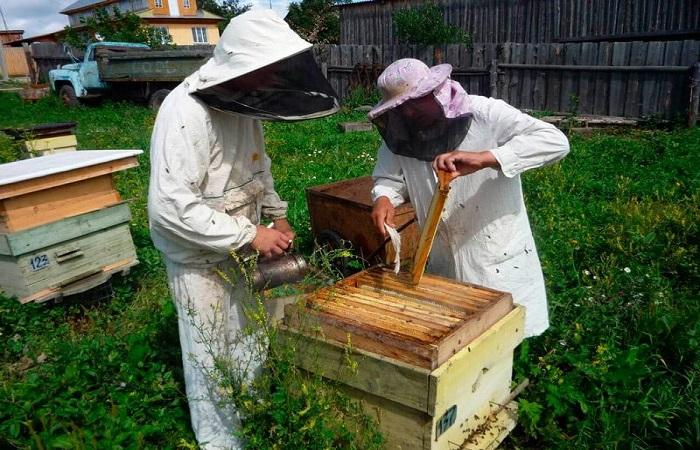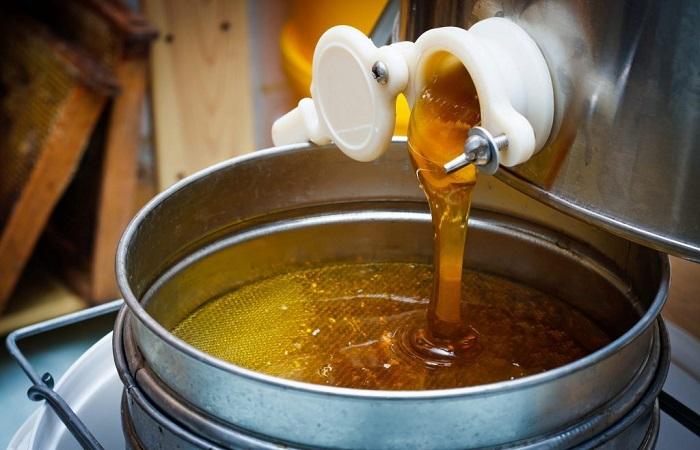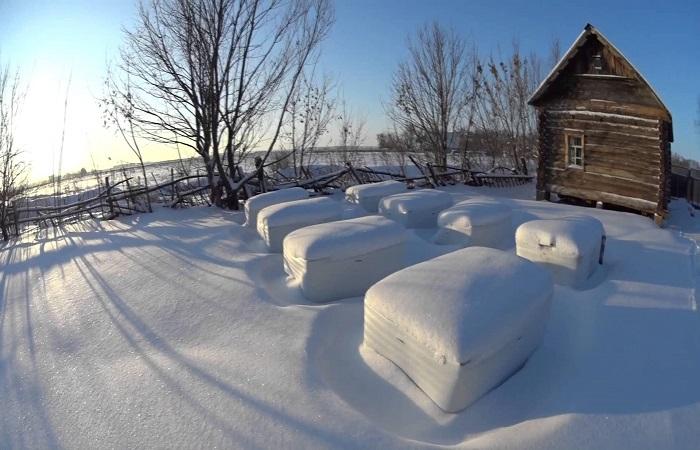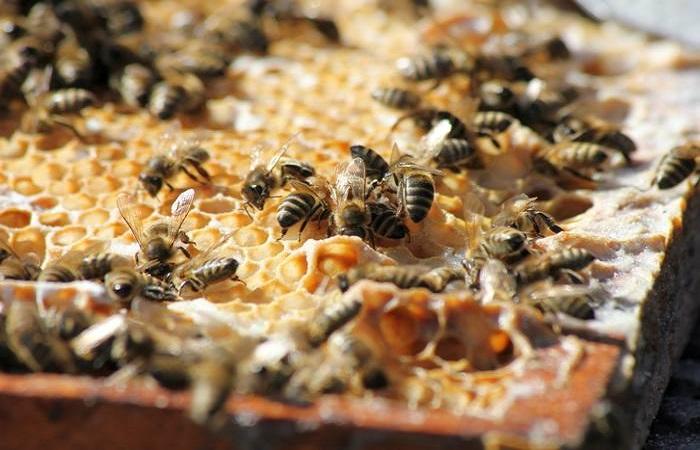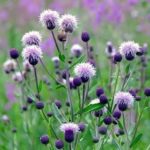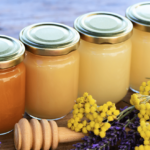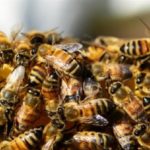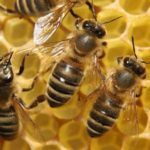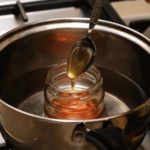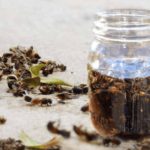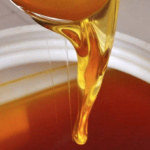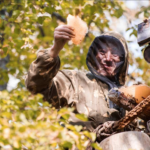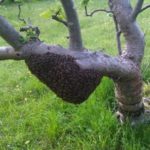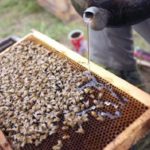Breeding honey bees is considered a very painstaking process. Many people are sure that this is a simple and promising activity that requires minimal investment of time and money. In fact, it is important to carefully prepare for creating a bee apiary, study the characteristics of the life of insects and get an idea of how to care for them. The calculation of income and expenses is of no small importance.
Is beekeeping right for you?
Before starting beekeeping from scratch, it is important for each person to understand whether this type of activity is suitable for him. Like other types of business, this line of activity requires investment. In addition, a real beekeeper should have the following qualities:
- Endurance and physical strength. The work involves high loads.
- Responsibility. The health of bees must be closely monitored.
- Good health. The main prohibition against this type of activity is considered to be an allergy to bee venom.
Before breeding bees, you need to obtain at least a minimum of knowledge about the life of insects. To do this, you should use tutorials and materials. If possible, it is recommended to contact knowledgeable beekeepers.
Choosing a location for a future apiary
The success of bee breeding depends on the correct location. The closer the apiary is to fields with honey plants, the more honey you can get. Therefore, beekeeping is more suitable for rural areas.
It is impossible to engage in this type of activity at home in the city. Of course, during the honey harvest period, the hives can be taken out and placed in the fields. However, this option has a number of disadvantages. It requires costs for transportation and placement in the fields. In addition, it is almost impossible to pump honey in the field. In this case, you will need to build a tent or wooden house.
When choosing a place for an apiary, you need to take into account that in the summer you will have to live near the apiary. During this time, she needs daily monitoring. An excellent solution would be the courtyard of a private house, which is located near the fields. When collecting honey, it is important to have the following crops nearby:
- acacia;
- Linden;
- buckwheat;
- sunflower;
- mint;
- sweet clover;
- alfalfa.
Preparation and placement of hives
Beekeeping is difficult without experience. An important nuance in this matter is the correct grouping of hives. 1 bee colony requires up to 40 square meters. The hives need to be lined up in rows - in groups of 2 or 4 houses. It is also possible to arrange them in a checkerboard pattern, which makes it possible to save space.
When placing houses in an apiary, you should adhere to the following parameters:
- an interval of 3-4 meters between hives;
- at least 10 meters to the boundaries of the farm;
- 50 meters from residential buildings;
- a distance of at least 4-7 meters if there are several rows.
Bee hives can be purchased ready-made or made with your own hands. The most suitable option is a sun lounger. This design is clearly visible, and therefore novice beekeepers will be able to control the development of the colony.
Each hive must be placed on a special stand or stakes. Houses should be removed 30-40 centimeters from the surface of the earth. If it is not possible to place the hives in the shade of trees, it is recommended to plant tall plants near them - sunflowers or corn. The entrances of the houses should be directed in the sunny direction - to the south or east.
So that insects can easily find their home, the hives should be painted in different shades. Bees distinguish yellow, blue, and white colors well.
To ensure comfortable placement of insects in hives, they must meet certain requirements. These include the following:
- Correct design. The hive should retain heat in winter and not get too hot in summer.The walls of the house should be protected from precipitation, wind, and temperature fluctuations. The recommended wall thickness is at least 3 centimeters.
- House size. The hive should be spacious enough. It is important that the brood, and supplies of honey and bee bread fit inside.
- Access to content. It is important that the hive is easy to disassemble and assemble. This helps control the honey supply and cleanse the contents of the hive. To facilitate the assembly process, the house fragments must be the same size.
Proper placement of hives on the site ensures high productivity of bees and rapid development of families. This also helps to avoid crossing different bee colonies. Thanks to this, it is possible to minimize the risk of hostility and theft in the apiary.
There are several options for arranging bee hives:
- private;
- group;
- chess.
The ordinary option is most often used when maintaining large apiaries or when there is a sufficient amount of free space. It is also used for nomadic hives. In this case, bee houses are placed on the site in even rows, making intervals of 4 meters. At the same time, it is recommended to place young families as close to honey plants as possible.
The most popular method is the group method. It helps create suitable conditions for bees, regardless of the size of the apiary, and simplifies their care. The method involves installing bee houses in groups of 5-6 pieces. In this case, you should maintain a distance of 50 centimeters. A protective strip measuring 4-6 meters is created between each group.
Selection and acquisition of bees
To practice beekeeping, it is important to choose the right bees. It is recommended to buy insects exclusively from professional beekeepers. At the same time, they must have a veterinary passport. It is of no small importance to purchase insects in the same region in which you plan to keep the apiary. The reputation of the breeder is of great importance.
To successfully keep bees, you need to give preference to species that are more adapted to local conditions and are not afraid of disease. It is worth considering the following:
- Central Russian bees are suitable for the central regions, Siberia, and the Urals. The disadvantage of this variety is the aggressiveness of insects.
- The Transcarpathian breed, which has a peaceful character, is perfect for beginners.
- An excellent solution would be gray mountain Caucasian bees, which are bred in the Southern and Volga districts, as well as in the center of Russia. The advantage of this breed is that its representatives are able to find honey in hard-to-reach places.
- Ukrainian and Italian bees are very popular for breeding in Russia.
For a small apiary, a few bee colonies that have survived the winter will be enough for beginners. When choosing each of them, you should pay close attention to the uterus. The queen bee is easy to find because it is larger than other insects. There should be no mechanical damage to the body of the uterus. In this case, the brood should be placed in its cell with a minimum of gaps.Other bees must also be healthy, have intact wings and be free of external defects.
Equipment for a novice beekeeper
At the stage of learning beekeeping, it is important to familiarize yourself with the necessary equipment. So, beekeepers need the following:
- Protective suit - its functions can be performed by any thick clothing that cannot be penetrated by a bee sting. The arms and legs should complement the cuffs. It is important to have light but thick shoes.
- Mask - it is usually sewn onto the costume. The special beekeeping mask has a special design. Thanks to this, the back of the head is covered with dense fabric. The mesh should cover your face, but not lie close to it. Special metal rings help position the mesh at a certain distance from the face.
- Gloves – Beginners who are wary of bees will want thick but comfortable gloves. It is recommended to handle frames with the utmost care. Experienced beekeepers often work without gloves, because they know that bees will not sting just like that. Aggression only appears when an insect is accidentally crushed.
- Chisel - with the help of this device it is possible to remove ceiling boards that are glued together with honey.
- Smoker - it is usually used if the bees do not have a bribe, are restless or are aggressively defending honey.
- Carrying - having taken out the honey frames, the bees are thrown into the hive. They are then placed in a special carrier. In fact, it is an ordinary box, which is covered with a piece of tarpaulin on top. After collecting the required number of frames, they are carried using a carrier to the location of the honey extractor - a house, basement or kitchen.
- Knife - the wax that covers the honeycomb needs to be cut off. To do this, you should use a special knife.With its help, you will be able to carefully cut off the caps, which are called caps. The instrument must first be soaked in hot water.
- Fork – it is not always possible to carefully remove the beam with a knife. In this case, it is permissible to use a special fork with many thin teeth. They are used to pry up the bar to tear it away from the honeycomb.
- Honey extractor is the name given to a barrel in which frames of honey are placed. In essence, it is a centrifuge that spins the frames. After which honey flies out of them. It hits the walls of the barrel and then flows down. Near the bottom there is a tap through which honey flows from the barrels. There are many honey extractors on sale today. They are manual or electric. A simple and inexpensive design is suitable for a beginner.
- Food cans – required for storing and transporting honey.
Honey collection and processing
If you raise bees, it is important to familiarize yourself with the main rules for collecting and processing honey products. After collecting honey, insects cover it with special wax caps that do not let air through. The product is isolated from the external environment and retains maximum beneficial properties.
Only completely sealed honey is allowed to be collected. If you do this during the bees' honey collection, there is a risk of getting a low-quality product with a high water content.
It is worth considering that every bee colony must have an emergency supply of honey. Its quantity is approximately 5 kilograms. With the onset of the period of productive bribes, the bees are given frames with foundation in which they will store honey. After it ripens, the frames are removed.
It's important to do it right. It is recommended to take into account the following recommendations:
- put on a protective suit;
- pull out one frame at a time from the hive;
- carefully shake off the bees, driving them away with smoke;
- get the honey when all the bees leave the frame;
- pump out the product using a honey extractor until it cools down.
After pumping out, the honey must be filtered and cleared of propolis fragments, honeycombs and larvae. After which the product should be left to brew. This is especially true for honey that is too wet. A quality product contains 18-21% water. With larger quantities, shelf life is reduced.
Features of wintering
There are lessons to be learned to help bees survive the winter. Some breeds must spend the winter in special houses called omshaniks. You can make them yourself, taking into account the size of the bee colony. Such structures are required for the Ukrainian steppe, yellow, Caucasian, and Carpathian breeds. At the same time, Central Russian bees can easily winter in outdoor hives. However, they need to provide suitable conditions.
Keeping bees in a winter hut is characterized by the following advantages:
- consumption of less feed;
- increasing the period of operation of the hive;
- no risk of bee death due to temperature fluctuations.
Pests and diseases
Keeping bees is often accompanied by various problems. These include the development of diseases and pest attacks. Hornets, wasps, mice, ants, and spiders pose a real danger to bees. To cope with pests, you should do the following:
- destroy nests and holes;
- set traps for hornets and wasps;
- transplant into new hives when bees are infected with wax moths.
Bee diseases are divided into 2 categories - contagious and non-contagious. The first group includes acarapitosis, nosematosis, and American foulbrood. These pathologies are associated with infection of bees by dangerous pathogens. Non-contagious bee diseases develop as a result of violation of maintenance rules and the use of low-quality food.
Income and expenses
To start beekeeping, you need to analyze all costs and income in advance. These are considered the basics of running a business. For 20 bee colonies, the approximate cost will be $3,700 in the first year. This is exactly how much money will be needed to purchase bees, tools, equipment, and arrange hives and other premises.
With proper construction of the apiary, in the first year it will be possible to collect 1200-1500 kilograms of beekeeping products - honey, wax, propolis. The profit from this will be about $4,600. Thus, it will be possible to recoup the apiary in the first season. At the same time, profits will increase every year.
Newbie mistakes
To keep your apiary successful, it is important to follow the advice of experienced beekeepers. However, beginners usually make the following mistakes:
- Regular inspections of hives are neglected. This must be done at least 3 times a week. During the swarming period, it is important to inspect bee houses every day.
- They don't know how to deal with swarms. It is important to control the bees so that they do not escape.
- They want to get the maximum honey yield. To do this, novice beekeepers feed the bees with sugar syrup. This leads to honey of questionable quality. As a result, beekeepers lose their clients.
The organization of a bee apiary has a number of features.Compliance with the basic rules of bee breeding helps to achieve good success in this business and get a good income from such activities.

